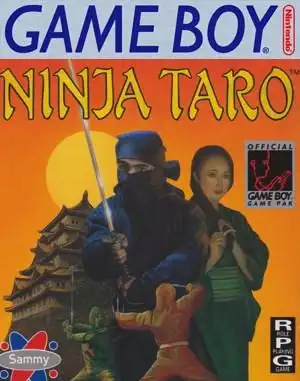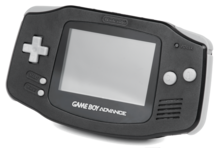Step back in time to the early days of the Nintendo Game Boy. While blockbusters like Tetris and Super Mario Land dominated the scene, the handheld gem played host to countless lesser-known titles, some of which were surprisingly ambitious, if a little rough around the edges. One such game that often flies under the radar is Ninja Taro Game Boy. It's a title with a bit of a curious history and gameplay that certainly leaves an impression.
What is this game, where did it come from, and does it hold up for retro enthusiasts today? Let's find out.
What is Ninja Taro?
Before landing on the Game Boy in 1991, Ninja Taro had a slightly different destiny planned. It originated from UPL's Japanese Ninja-kun series. American Sammy had plans to bring a port of the game to the Nintendo Entertainment System (NES), even promoting it heavily around 1990. However, that NES version never saw a proper release, existing now primarily as an unreleased prototype sought after by collectors.
Instead, a revised version made its way to Nintendo's burgeoning handheld, the Game Boy. This wasn't just a straight port; it was adapted for the Game Boy's capabilities (and limitations). The result is a unique action-adventure game that feels somewhat like a scaled-down Zelda clone, though with its own distinct personality and quirks.
Stepping into Taro's Shoes
At its core, Ninja Taro is an exploration-focused action game. You guide the titular ninja through various areas, battling enemies and solving simple environmental puzzles. The game structure is surprisingly open for an early Game Boy title. While there's a main path, you can often backtrack and explore previously visited areas, giving the illusion of a larger, interconnected world perfectly suited for quick handheld sessions.
However, this is where the game's most significant point of contention arises: the controls. Ninja Taro uses a rather rigid 4-way grid movement system. This means Taro moves one square at a time horizontally or vertically. While common in some puzzle games, applying this to an action-adventure title with real-time combat feels... awkward. Engaging enemies often becomes a passive affair, relying more on enemy AI patterns than precise player movement or dodging. It's a design choice that definitely takes getting used to and can be frustrating for players expecting more fluid control.
Gear Up (Maybe)
Like many adventure games, Ninja Taro provides you with various items and weapons. You start with basic attacks, but can find power-ups to improve them. The variety of weapons isn't huge, and some players find one particular sword becomes dominant quickly.
Beyond weapons, there are gadgets like bombs or camouflage. Unfortunately, many of these items feel surprisingly useless in practice, as your basic attacks are often sufficient. Compounding this issue is the need to constantly pause the game and open a menu to equip these gadgets, a tedious process that breaks the flow of exploration and combat. It's a classic example of early game design friction.
Exploring the World
Despite the control and item frustrations, Ninja Taro does have its charms. The world, though simple in its tile-based design, is reasonably varied, featuring different environments as you progress. The game is also surprisingly fleshed out for its time, with simple stories and characters that add a touch of personality.
The art style is basic, as expected for an early Game Boy title, but it occasionally throws in some unexpectedly grotesque or strange imagery, like walls with eyes or fleshy-looking demons, adding a unique, slightly unsettling flavor to the visuals.
The Challenge Ahead
While the early game might feel straightforward (once you adapt to the controls), Ninja Taro ramps up the difficulty significantly in its later sections. This isn't always due to clever design. You might encounter long travel times after dying due to distant save points, an over-reliance on frustrating illusionary walls you have to constantly bump into to find, and general enemy difficulty spikes that feel less earned and more punishing when combined with the awkward movement. Bosses, surprisingly, are often less challenging than the standard enemies or environmental hazards.
Is Ninja Taro Worth Playing Today?
For most casual retro gamers, Ninja Taro Game Boy might be a tough recommendation due to its clunky controls and design frustrations. It's certainly not a lost masterpiece.
However, if you're a fan of obscure retro titles, particularly early Game Boy games, or you're fascinated by games with unique (if flawed) mechanics and a bit of a strange history, Ninja Taro offers a peculiar experience. It's a snapshot of early handheld game design trying to tackle a more complex genre, and there's a certain charm in its ambition and its oddities. Completing it feels like conquering a quirky, forgotten challenge.
Frequently Asked Questions
Q: What genre is Ninja Taro on the Game Boy? A: It's best described as an action-adventure game with exploration and puzzle elements, often compared structurally to early Zelda titles.
Q: Is Ninja Taro related to other games? A: Yes, it's part of UPL's Japanese Ninja-kun series. An unreleased NES version was planned by American Sammy before the Game Boy version was released.
Q: Is Ninja Taro rare or valuable? A: While not as common as major Nintendo titles, it's not considered extremely rare compared to true prototype or limited-run games. Its value is moderate, primarily appealing to Game Boy collectors.
Q: Where can I play Ninja Taro today? A: The original Game Boy cartridge is the primary way. Emulation is also an option for experiencing the game digitally, though always be mindful of the legality of ROM sources.


